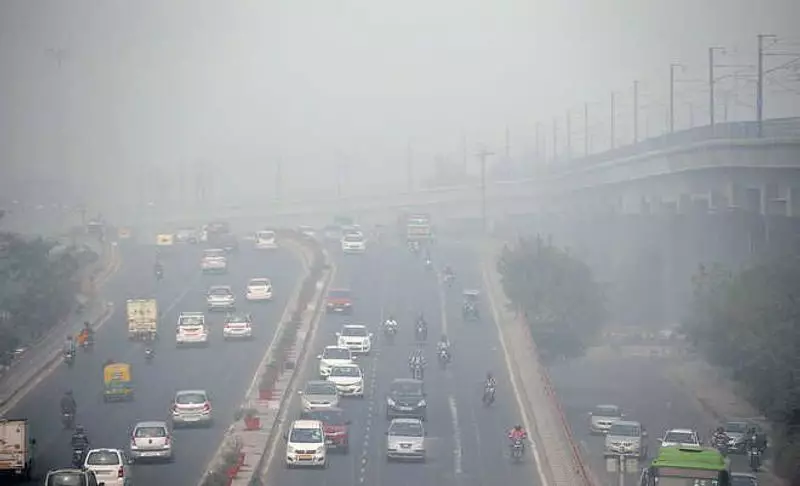
Delhi's atmosphere is facing a dangerous new threat as nitrogen dioxide levels surge alarmingly across the national capital. Environmental experts have identified vehicular emissions as the primary culprit behind this disturbing trend, raising serious concerns about public health and urban air quality management.
The Invisible Danger in Delhi's Air
Recent monitoring data reveals that nitrogen dioxide concentrations have reached concerning levels throughout Delhi. This toxic gas, primarily emitted from vehicle exhausts, has become a persistent component of the city's polluted air, creating an invisible health hazard for millions of residents.
Environmental specialists monitoring the situation emphasize that the problem isn't seasonal but has become a year-round concern. While particulate matter often dominates pollution discussions, the rising NO2 levels represent an equally dangerous component of Delhi's complex air pollution cocktail.
Vehicles: The Main Offenders
Vehicular emissions account for the overwhelming majority of nitrogen dioxide pollution in the capital city. The continuous flow of cars, trucks, motorcycles, and other vehicles on Delhi's roads creates a constant stream of this harmful gas into the atmosphere.
Experts point to several factors contributing to this crisis. The sheer volume of vehicles on Delhi's roads, combined with frequent traffic congestion, creates ideal conditions for NO2 accumulation. Additionally, the concentration of emissions in densely populated areas means more people are exposed to dangerous levels of this pollutant.
The problem is particularly acute near major roadways and traffic intersections, where NO2 levels frequently exceed safe limits. Monitoring stations across the city consistently show higher readings in areas with heavy traffic flow.
Health Impacts and Environmental Consequences
The rising nitrogen dioxide levels pose significant health risks to Delhi's population. Medical experts warn that prolonged exposure to NO2 can cause serious respiratory problems, including aggravated asthma symptoms, reduced lung function, and increased susceptibility to respiratory infections.
Children, elderly residents, and people with pre-existing respiratory conditions face the highest risk. However, even healthy individuals may experience adverse effects from continuous exposure to elevated nitrogen dioxide concentrations.
Beyond direct health impacts, nitrogen dioxide contributes to other environmental problems. It plays a role in the formation of ground-level ozone and particulate matter, creating secondary pollutants that further degrade air quality. This creates a compounding effect where NO2 emissions contribute to multiple air quality issues simultaneously.
Urgent Calls for Comprehensive Solutions
Environmental experts are urging immediate action to address the nitrogen dioxide crisis. They emphasize that controlling vehicular emissions must become a top priority for urban planners and policymakers. Several key solutions have been proposed to tackle this growing problem.
The expansion of Delhi's public transportation system could significantly reduce the number of private vehicles on the road. Improving metro connectivity, increasing bus frequency, and creating dedicated cycling infrastructure could provide viable alternatives to personal vehicle use.
Stricter emission standards for vehicles, combined with regular pollution checking and enforcement, could help reduce NO2 output from existing vehicles. The promotion of electric vehicles through better infrastructure and incentives represents another crucial strategy for long-term improvement.
Urban planning measures such as creating low-emission zones, improving traffic flow through better road design, and promoting mixed-use development to reduce travel distances could all contribute to lowering nitrogen dioxide levels.
Environmental activists stress that public awareness about the dangers of NO2 exposure needs immediate enhancement. While most Delhi residents are concerned about air quality, specific knowledge about nitrogen dioxide risks remains limited. Educational campaigns could help people understand the importance of supporting emission reduction measures.
The situation demands coordinated action from government agencies, environmental organizations, and citizens. Without immediate intervention, Delhi's nitrogen dioxide problem could escalate into a full-blown public health emergency, adding another layer to the city's already complex air quality challenges.





